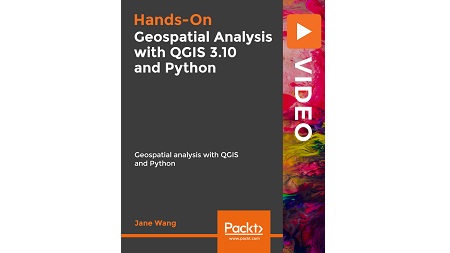
English | MP4 | AVC 1920×1080 | AAC 48KHz 2ch | 1h 59m | 5.14 GB
Innovative GIS workflow solutions with key complementary technologies
Given the increasing amounts of open geospatial and remotely-sensed data and the vast amount of information it provides, GIS is an essential instrument for geographers, engineers, geologists, architects, ecologists, and agronomists who recognize the complex operations required to wrangle, analyze, and visualize their data.
If you’re a professional using GIS in your daily work and already have some knowledge of Python, QGIS—aligned with Python—will give you compelling opportunities to streamline workflows and maximize your data analysis and manipulation.
This course will get you up-and-running with geospatial analysis using QGIS 3.10 and Python.
Learn how to use data queries, create a 3D map on a web server, and interact with Python and QGIS. You will learn to distinguish between vector and raster layers; which will give you flexibility when considering data sources and processing methods for problem-solving. While understanding how to process remote sensing data and output terrain maps, and customize and automate geo-processes effectively for your work.
Learn
- Carry out and automate geospatial and remote sensing data analysis, research, and visualization
- Implement efficient and reproducible workflows for geospatial analysis
- Create professional cartographic products that are presentation-ready
- Tailor your professional geospatial products to specific needs on the part of clients, Academia, or governmental organizations
- Georeferenced datasets, project, and apply styles to spatial layers for mapping and navigational purposes
- Query spatial layers for user-defined purposes and answer specific questions
- Create stereo maps showing altitude and hillshade and prepare them for professional use
Table of Contents
Getting Started QGIS in Python
1 Course overview
2 Benefits of Combining QGIS and Python
3 Improving Workflow with QGIS
4 Software Download and Setup
5 Understanding Spatial and Remote Sensing Data
Preparing Your First 3D Map
6 Project Automation
7 Familiarizing with Operational Environments
8 Plotting Spatial Data and Visualizing 3D Maps
9 Creating Your First Spatial Layer in QGIS
Processing Vector Layers and SQL Queries
10 Distinguishing Layers – Vector and Raster
11 Handling Vector Layers
12 Vector Layer Spatial Analysis
13 Field Calculator
14 Write to, Output, and Export Vector
Remote Sensing Data Analysis Using Python GDAL Library
15 Remote Sensing Theories
16 Earth Imagery Query and Download
17 Viewing and Handling Multiband Images
18 Project and Re-project Raster Using gdal warp
19 Creating Digital Elevation Model and Terrain Maps
Stylizing and Outputting Professional Geospatial Tools
20 Georeferencing a Raster Layer
21 Outputting a Professional Map from QGIS
22 Stylizing Spatial Layers
23 Creating a Geospatial PDF for Field Navigation
24 Conclusion and Resources
25 Course Summary
Resolve the captcha to access the links!